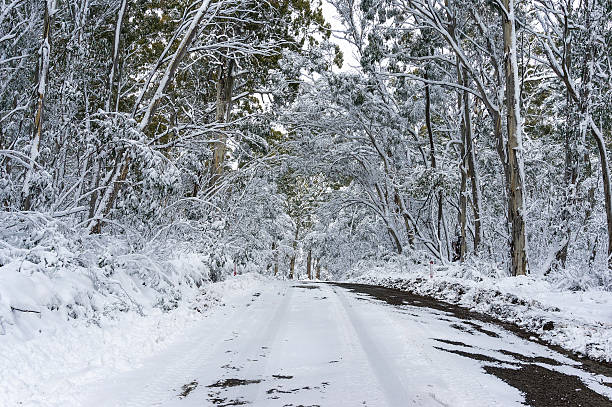Find Out Why Snow In Australia is a Must-See for Winter Enthusiasts
Find Out Why Snow In Australia is a Must-See for Winter Enthusiasts
Blog Article
The Various Sorts Of Snow in Australia and Their Effect On Winter Months Sports
Australia, recognized for its sun-soaked coastlines, is likewise home to a diverse range of snow problems that dramatically affect wintertime sporting activities. Each kind, from the wet coastal snow to the dry indoor powder, presents distinct obstacles and benefits for professional athletes. An understanding of these variations is essential for those seeking to navigate the Australian slopes, as each calls for different techniques and durability. The complying with exploration will go over the effects of these snow types on winter sporting activities performance.

Comprehending the Attributes of Various Snow Types
While numerous presume that snow is a homogeneous entity, it is necessary to understand that there are various types, each with special attributes. In Australia, these variations are specifically obvious as a result of weather diversity. Coastal snow, found in locations such as the Snowy Hills, is usually wetter and denser as a result of high moisture content, making it excellent for snowball fights or building snowmen. On the various other hand, the snow discovered in the indoor areas like the Australian Alps is drier and lighter, frequently compared to a cosy powder. These differences in snow type aren't just aesthetic; they considerably influence winter months sporting activities, determining the ease of movement, the speed attainable, and the degree of control called for from athletes.
The Impacts of Powder Snow on Winter Sports and Snowboarding
In spite of its light and cosy appearance, powder snow in the Australian Alps offers both unique obstacles and chances for winter season sports fanatics, particularly those participated in skiing and snowboarding. The loose, dry nature of powder snow can initially be challenging to navigate for newbies, calling for mindful equilibrium and control. Nevertheless, for more experienced practitioners, the soft, untracked snow supplies an exhilarating experience, permitting nimble and vibrant motion. The forgiving and smooth surface of powder snow additionally lowers threat of injury during drops, making it a recommended selection for severe winter sporting activities. It's worth keeping in mind, the differing depth and uncertain nature of powder can occasionally lead to surprise barriers, calling for constant vigilance.

The Difficulties and Advantages of Jam-packed Snow in Winter Season Sports
Changing emphasis from the loose, dry powder snow, an additional common sort of snow in the Australian Alps is packed snow, posing its own set of obstacles and advantages in the world of winter sports. This denser, extra solidified type of snow supplies a faster, slicker surface, benefiting sports like downhill snowboarding and snowboarding, boosting rate and precision. However, the very same characteristics additionally present challenges. Its tough surface area can be risky, boosting the capacity for injuries during drops. In addition, managing and navigating turns speed can be difficult on jam-packed snow, needing greater ability levels from professional athletes. Regardless of these difficulties, loaded snow stays an important component page in lots of winter season sports, forming the performance and methods of athletes.
The Duty of Wet Snow in Australian Winter Games
In comparison to the dense, glossy surface of jam-packed snow, wet snow plays a completely different role in Australian winter months games. Does Australia Get Snow. Its pliability makes it optimal for snow sculpting occasions and for fortifying snow frameworks in sports like snow fort fights.

Exactly How Slushy Snow Influences Winter Sports Efficiency
Proceeding the exploration of differing snow problems in Australia, the impact of slushy snow on wintertime sports is another appealing aspect. Slushy snow, arising from warmer temperatures or straight sunlight, positions one-of-a-kind challenges to professional athletes. It reduces speed and calls for boosted exertion as the devices sinks into the soft, water-saturated snow. In skiing and snowboarding, slushy conditions can impact the predictability of dives and turns, raising get redirected here the danger of accidents. For snowmobiling, the equipment's efficiency might be impeded as it struggles to maintain grip. Therefore, slushy snow transforms the winter season sporting activities landscape, requiring not only heightened physical effort from professional athletes however also a greater focus on security precautions. website link
Adapting Winter Season Sports Techniques to Numerous Snow Problems

Verdict
In verdict, Australia's varied snow types considerably affect winter months sports efficiency. Each kind, from the slick seaside snow to the drier interior powder and the hefty, sticky wet snow, presents unique challenges and advantages.
Shifting focus from the loosened, completely dry powder snow, another widespread type of snow in the Australian Alps is packed snow, posturing its own collection of obstacles and benefits in the world of winter months sporting activities - Does Australia Get Snow.In comparison to the dense, slick surface area of packed snow, wet snow plays an entirely various duty in Australian wintertime games. Its malleability makes it optimal for snow sculpting occasions and for strengthening snow frameworks in sports like snow fort fights.Continuing the exploration of varying snow conditions in Australia, the impact of slushy snow on winter months sporting activities is one more interesting factor. Each type, from the glossy seaside snow to the drier interior powder and the hefty, sticky wet snow, provides unique challenges and benefits
Report this page